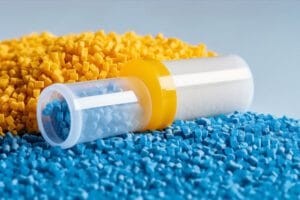What is hydrolysis?
Hydrolysis is a chemical reaction in which a compound is broken down through the addition of water molecules. During hydrolysis, water molecules interact with the chemical bonds in a substance, causing them to break. This process results in the formation of new substances through the cleavage of the original compound. Hydrolysis is a common and important reaction in various biological, chemical, and industrial processes. It can occur under different conditions, including exposure to water, high temperatures, or the presence of specific catalysts or enzymes. The outcome of hydrolysis is the decomposition of a complex substance into simpler constituents.

What causes hydrolysis?
hydrolysis is caused by the interaction of a substance with water molecules, leading to the cleavage of chemical bonds within the material. Several factors can contribute to the occurrence of hydrolysis:
Water Exposure: The primary cause of hydrolysis is exposure to water. When a substance comes into contact with water molecules, the hydrogen and hydroxide ions in water can replace or interact with certain chemical bonds in the material, causing them to break.
Temperature: Elevated temperatures can accelerate hydrolysis reactions. Higher temperatures provide additional energy to the molecules, increasing the likelihood of successful collisions and bond cleavage.
Catalysts: Some substances act as catalysts, facilitating and accelerating hydrolysis reactions. Catalysts can lower the activation energy required for the reaction to occur, making hydrolysis more efficient.
Enzymes: In biological systems, enzymes often play a crucial role in catalyzing hydrolysis reactions. Enzymes are biological catalysts that facilitate the breakdown of complex molecules in living organisms, including the hydrolysis of biomolecules such as proteins, carbohydrates, and nucleic acids.
Acids or Bases: In certain cases, the presence of acids or bases can catalyze hydrolysis. Acid-catalyzed hydrolysis involves the addition of protons, while base-catalyzed hydrolysis involves the removal of protons.
Specific Chemical Bonds: The susceptibility of a substance to hydrolysis depends on the nature of its chemical bonds. Certain bonds, such as ester or amide bonds, are more prone to hydrolysis than others. Such as ester bonds. See more about Hydrolysis of esters
What prevents hydrolysis?
Preventing hydrolysis involves implementing measures to minimize the exposure of a substance to water and other factors that may trigger the hydrolysis reaction. Here are some strategies to prevent hydrolysis:
Protective Coatings: Applying protective coatings or barriers to the surface of a material can create a shield against moisture and water. These coatings act as a physical barrier, preventing water molecules from coming into direct contact with the material and reducing the likelihood of hydrolysis.
Hydrophobic Materials: Choosing or designing materials that are inherently hydrophobic (water-repellent) can help prevent hydrolysis. Hydrophobic materials naturally resist water absorption, reducing the risk of water-induced degradation.
Proper Storage: Storing substances in dry and controlled environments can prevent exposure to humidity and moisture. Proper storage conditions, such as low humidity and stable temperatures, can significantly reduce the risk of hydrolysis.
Desiccants: Including desiccants, which are materials that absorb moisture, in the packaging or storage of sensitive substances can help maintain dry conditions and prevent hydrolysis.
Sealed Packaging: Packaging materials in sealed containers or impermeable packaging can prevent the entry of moisture and external contaminants, safeguarding the material from hydrolysis.
Inert Atmospheres: In some cases, working in inert atmospheres, such as nitrogen or argon, can help create an environment with reduced oxygen and moisture levels, thereby minimizing the conditions conducive to hydrolysis.
Choosing Resistant Materials: Opting for materials that are inherently resistant to hydrolysis can be a preventive measure. For example, using polymers with chemical structures that are less susceptible to water-induced degradation.
pH Control: Maintaining a neutral pH environment can be important for preventing hydrolysis. Extreme pH conditions (very acidic or very alkaline) can catalyze hydrolysis reactions, so controlling and adjusting pH levels may be necessary.
Additives: Incorporating additives into materials, such as stabilizers or anti-hydrolysis agents, can enhance resistance to hydrolysis. These additives may interfere with the hydrolysis reaction, slowing down or inhibiting the process. See more about anti-hydrolysis agent
By combining these preventive measures, it is possible to minimize the risk of hydrolysis and extend the lifespan of materials and substances in various applications.






